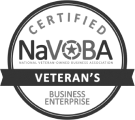The Complete Guide to Cleaning Your Coffee Maker
Home > Blog > Brewmaster Tips > Coffee Gear > The Complete Guide to Cleaning Your Coffee Maker
Pour over coffee makers, a drip machine, or any other coffee brewing method, what most step-by-step guides leave out is the clean up after. But cleaning your coffee maker is essential.
If you don’t keep your coffee maker clean, this will have an effect on the flavor of your brew. All the old oils from your last brew which are going rancid with age will be stuck to the inside of your carafe or the fibers of your reusable filter.
Then, when you start to add hot water for your next brew, those rancid oils will seep into your coffee. Think of it like pouring fresh milk into a glass that still has residues of old milk, now gone sour.
If you wouldn’t do that, you shouldn’t use unwashed equipment for brewing coffee. A thorough clean is just as important to a good cup of coffee as the brewing itself. There are many different ways to clean a coffee maker.
Some are dishwasher safe which is probably exactly what you wanted to hear. But even hand washing doesn’t have to be exhausting or tedious work. The best way to clean a coffee maker depends on what you are using. In this article, we will show you a few ways to clean a coffee maker so that you can take your pick.
How to Clean a Coffee Maker – Basics
Drip coffee makers:
- Empty out the coffee pot.
- Dump out grounds and the old filter.
- Do a quick run over with a wash cloth to remove any stray grounds.
- Fill the machine full with water. You might also try adding vinegar to the water. Read more about that in the next section.
- Run a water-only brew.
- Repeat this twice.
French Press:
Pretty straight forward, although the filter on the plunger can be tricky. Wash out the cylindrical chamber with warm, soapy water and a sponge as you would any other dish (dump out the grounds first!). For the plunger, first check if it’s dishwasher safe. If so, problem solved. If not:
- Disassemble the different parts: lid, plunger, filter.
- Submerge in hot soapy water. You can use baking soda instead of soap. Read about that later in this article.
- Scrub the parts with a small brush or sponge.
- Rinse thoroughly.
- Let dry before reassembling.
Pour Over Carafe:
w/a reusable filter, follow these steps if it isn’t dishwasher safe:
- Fill the carafe with hot soapy water (or water with baking soda).
- Let that soak for a bit.
- Submerge the filter in hot soapy water.
- Scrub the inside of the carafe with a long handle brush or sponge. The brush should be soft enough that it doesn’t scratch up the glass. It just needs to remove the oils.
- Scrub your filter.
- Rinse both thoroughly. Let dry.
There are other kinds of brewing equipment available but the basic idea is the same. You want hot water and a cleaning agent (soap, vinegar, or baking soda) to help remove the coffee oils so that they don’t impart a rancid taste to your next brew.
How to Clean a Coffee Maker with Vinegar
Vinegar is probably not the first thing you think of using in your coffee maker. You might hesitate thinking that the vinegar might leave a sour after taste. No need to fear as long as you rinse it properly.
Vinegar is an extremely effective cleaning solution that will help remove all those old coffee oils and any other unwanted grime that could be ruining your coffee.
The advantages of using (distilled white) vinegar include:
- Prevents calcification. All water, no matter how well-filtered, will still leave behind a little mineral residue each time. Vinegar breaks down these minerals and gets rid of them.
- Remove oils. The key purpose of cleaning a coffee maker is breaking down and removing the coffee oils. The acidity of vinegar is perfect for this.
You don’t need to do a vinegar wash every single time but we recommend doing it once every 4-6 weeks. This will greatly extend the life of any equipment you have and keep your brew consistently delicious. Just make sure you thoroughly rinse out the vinegar afterward!
How to Clean a Coffee Maker with Baking Soda
Baking soda is another great cleaning agent that many coffee lovers prefer over soap because it does not leave any soapy residue that could affect the flavor of the coffee. While we firmly believe that a thorough rinse is enough to remove any soapy residue (otherwise everything you eat and drink would taste soapy), baking soda is definitely a go-to cleaner. The advantages of baking soda as your cleaning agent include:
- Less potent odor than vinegar. Any vinegar residue left after an incomplete rinsing will add an unpleasant vinegar taste.
- Breaks down oils. Like vinegar, baking soda will break down and remove any oils. It’s also good at removing any stains if they exist. Visible coffee stains means WAY too much stale coffee build up.
- More effective scrubbing. Adding baking soda to the water you clean with adds a bit of grainy texture that is perfect for physically breaking up and removing build up. But, it’s also gentle enough to avoid scratching up your equipment. It’s like an exfoliating scrub for your coffee equipment:).
Baking soda is an effective replacement for soap and can be used as part of your daily cleaning routine. We still, however, recommend a vinegar clean every 4-6 weeks for your deep-cleaning routine.





